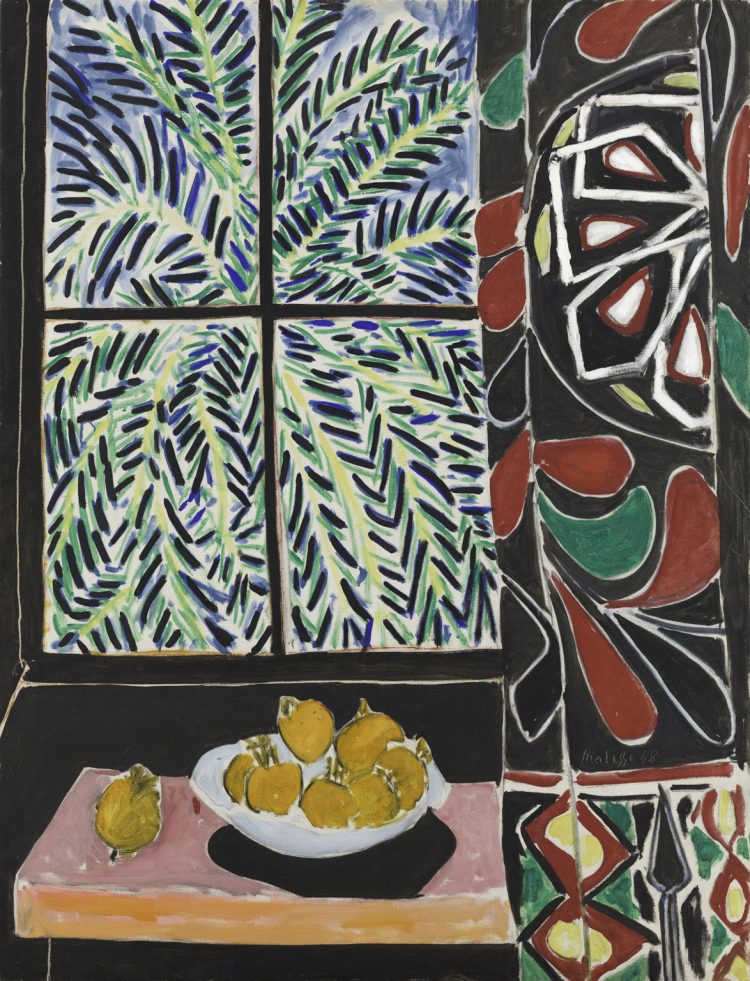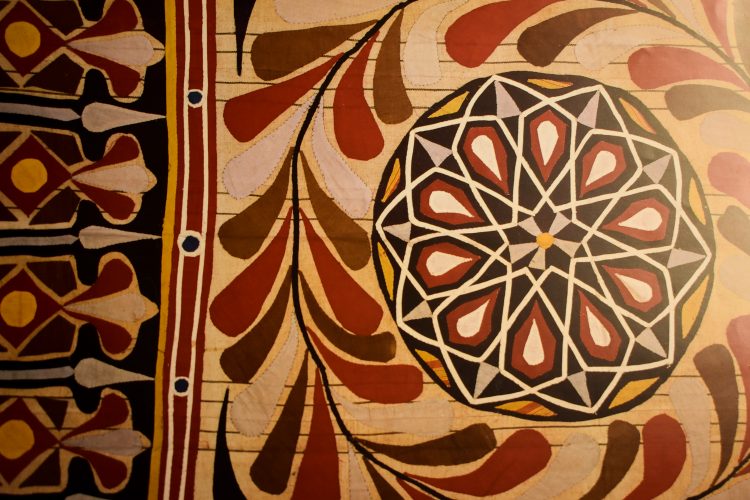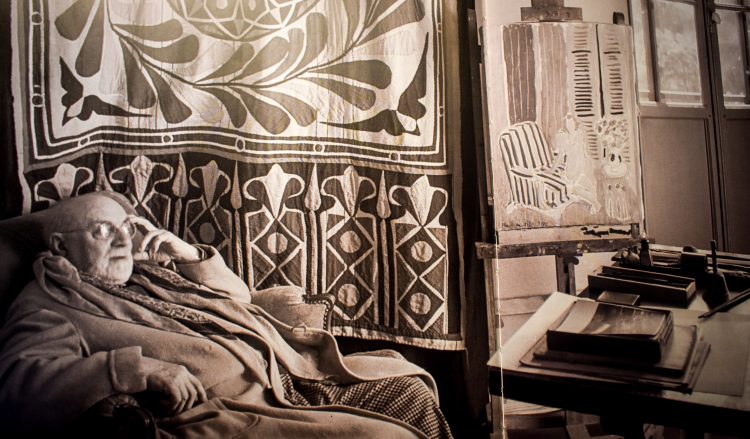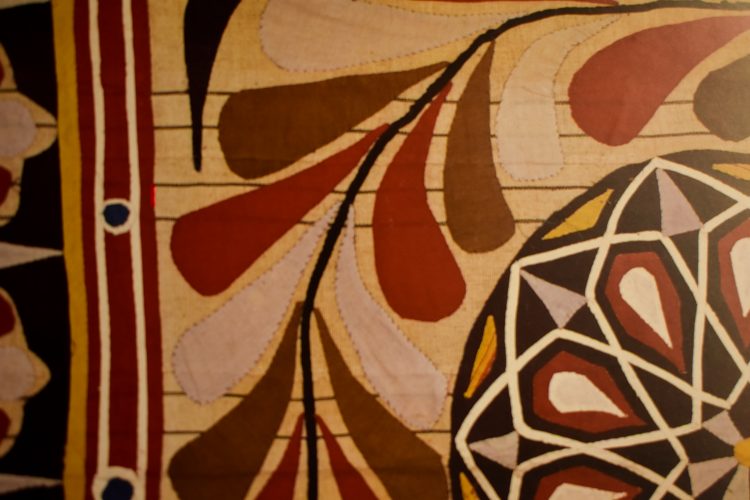When I went to the exhibition Matisse and His Textiles: The Fabric of Dreams at the Metropolitan Museum of Art in 2004, I was astonished to see the real Egyptian curtain used in Matisse’s painting of the same name owned by The Phillips Collection. According to the catalogue essay, written by Matisse expert Hilary Spurling, Matisse had a lifelong love affair with textiles. He grew up in a dark, dreary part of northeast France, in a small town that was known throughout France for its shimmering textiles. Weavers constantly experimented with different ways of combining color and pattern.
Matisse escaped to Paris when he was a young man. He knew nothing of the art work of his contemporaries or the Impressionists. Instead, he used textile vocabulary to describe works of art. He spoke of a given artist’s work as being like silk, taffeta or velvet. From the top of a double decker bus, Matisse saw a beautiful blue and white printed textile in the window of a secondhand shop, which he purchased with funds that he could ill afford. He placed it on a table which he covered with still life elements such as bowls of fruit. He used that and other textiles to create powerful compositions over a period of many years, calling his collection of fabrics “my working library.”
Matisse was a prodigious collector of textiles. He had hundreds of them, including rugs from northern Africa, the Congo, and couture fabrics purchased at the end of the season. He used the textiles as inspiration when he created new compositions. On his trips from Paris to Nice, he brought many of the textiles with him. According to Hilary Spurling, visitors to Matisse’s studio left dazed and disbelieving after seeing his collection of textiles, thinking that his studio looked more like something out of a fairy tale rather than the center of serious productive effort.
Deeply inspired by textiles from Congo, which he called “my African velvets,” Matisse began his series of cut outs, in which he cut figurative and abstract patterns out of colored paper. The Egyptian Curtain is one of the last paintings he did before embarking on the cut outs.
A photograph of Matisse with the Egyptian curtain in his studio reveals the ways in which the artist altered his composition from the original by turning up the volume on the colors he used. The painting transformed quiet ochres into a dynamic composition of dizzying reds and greens.
By The Phillips Collection’s Head Librarian, Karen Schneider.





Dear Karen,
I am fasinated by the information you give about Matisse’s love for fabric and the importance of fabric to his art. I myself love fabrics but confine myself to sewing… I have a print of his work ‘Interior with Egyption Curtain’ in my living room which has, unfortunately, faded somewhat with the years.
Could you please tell me where can I purchase another good quality print of this specific picture?
Best regards,
Anatte Gabbai